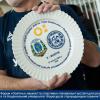Feed aggregator
Ennostar Inc merging EPISTAR and Lextar iinto Ennostar Corp
🎥 Історії військових з КПІ ім.Ігоря Сікорського
1 098 днів повномасштабного вторгнення. 4 105 днів від початку Революції Гідності, анексії Криму та війни на сході України. Тисячолітня боротьба за незалежність.
EcoFlow’s RIVER 2: Svelte portable power with lithium iron phosphate fuel

As I discussed in early December, my first purchase attempt of a lithium battery-based portable power generator, Energizer’s PowerSource Pro, didn’t pan out. But I didn’t give up. In fact, as I’d alluded to in a writeup published two weeks earlier, I bought two successors, both from the same company, EchoFlow. The smaller RIVER 2 (and no, I don’t know why its marketing-anointed name is all-caps):

is what I’ll be discussing here, with coverage of its more sizeable, flexible DELTA 2 sibling saved for another day (that said, currently scheduled to arrive in your web browser shortly):

With the stock photo out of the way, here’s a shot of my particular unit fresh out of the box and on the workbench, first in overview with its SLA battery-based Phase2 Energy PowerSource 660Wh 1800-Watt Power Station precursor in the background:

And then in closeup, specifically of its front panel display during initial AC-fed charging:

I picked up the RIVER 2 from EcoFlow’s eBay store, supposedly refurbished, for $109.68 after a 20%-off promo coupon, inclusive of sales tax and with free shipping, at the beginning of September. I say “supposedly refurbished” because, in stark contrast to the Energizer PowerSource Pro Battery Generator I’d bought earlier, which was supposedly brand new but arrived in clearly pre-used condition, this one seemingly came fresh and pristine straight from the factory manufacturing line. Why? I suspect it had something to do with the fact that shortly after I bought mine, EcoFlow introduced its gen-3 devices. The RIVER 3’s incremental benefits were modest, as it turned out and at least in my typical use case, such as:
- GaN-based circuitry, resulting in even smaller dimensions than before, along with higher-efficiency (therefore cooler and quieter) operation
- Higher USB-C PD peak output power (100 W vs 60 W), and
- Faster output switching speed from direct to inverter-generated AC, thereby enabling the RIVER 3 to more robustly act as an UPS (<20 ms vs 30 ms)
Although curiously, the RIVER 3’s peak stored charge capacity decreased to 245 Wh versus the RIVER 2’s 256 Wh. My guess is that my good fiscal fortunes were due to a preparatory stealth warehouse-purging move on EcoFlow’s part.
What was my rationale for getting the RIVER 2 in addition to the more sizeable Energizer PowerSource Pro-like DELTA 2? The price tag was certainly an effective temptation. More generally, here’s what I wrote back in December:
[It] is passable for overnight camping trips in the van, for example. Or a day’s worth of drone flying. Or for powering my CPAP machine and oxygen concentrator overnight. And I can use the aforementioned 100-W portable solar panel to also recharge it during the day (albeit not at the same time as the Phase2), in conjunction with an Anderson-to-XT60i connector adapter cable.
That “aforementioned 100-W portable solar panel” is this:

which I’d covered back in September. And in the spirit of “the proof of the pudding is in the eating” (which for today I’m rephrasing as “the proof of the concept is in the pictures”), here are some shots of it hooked up to on my back deck. First, the solar panel itself:

An illuminated light means “working”:

As does this output-voltage reading:

This particular solar panel was originally intended for use with (and still works fine with) the Phase2 Energy PowerSource, whose backside includes an Anderson Powerpole PP15-45 solar charging connector:

To adapt the panel to that generator, as mentioned in more recent coverage, “required both the female-to-female DC5521 that came with the Foursun F-SP100 solar panel and a separate male DC5521-to-Anderson adapter that I bought off Amazon:”

And what about the RIVER 2? Its solar (as well as car, via an included “cigarette lighter”-source adapter cable) charging connector of choice, as mentioned in that same more recent coverage, is an orange-color XT60i:
 the higher current-capable, backwards-compatible successor to the original yellow-tint XT60 used in prior-generation EcoFlow models:
the higher current-capable, backwards-compatible successor to the original yellow-tint XT60 used in prior-generation EcoFlow models:

So, what did I do to bridge the connection-discrepancy gap? I added yet another cable to the chain, of course:

a third-party Anderson to XT60i adapter I’d found on Amazon:


The resultant setup does indeed passably bump up the RIVER 2 battery charge, assuming there’s adequate available sunshine, although fastest charging results are unsurprisingly achieved with the RIVER 2 tethered to AC as shown earlier. To wit, by the way, my stopwatch happily confirms EcoFlow’s website claim that you can “charge 0-100% in only 60 mins”.
To the “svelte” adjective in this writeup’s title, I’ll offer the following representative specs:
- Dimensions: 9.6 x 8.5 x 5.7 inches
- Weight: approximately 7.7 lbs.
The RIVER 2 standard maximum AC-inverter power output (pure sine wave, not simulated) is 300W, and it also offers a feature branded as X-Boost Mode, which doubles the output AC power (at a reduced voltage tradeoff that not all powered devices are guaranteed to accept, albeit obviously counterbalanced by higher current) to 600W. And speaking of powered devices, what are its AC and DC power output options? I thought you’d never ask:
- Two AC (one two-prong, one three-prong with ground): 120V, 50Hz/60Hz, 300W (along with surge 600W at sub-120V, as just described), pure sine wave, not simulated
- Two USB-A DC: 5V, 2.4A, 12W max
- Cigarette lighter” car DC: 12.6V, 8A, 100W max
- And USB-C (which does double-duty as both an output and another battery-charge input option, along with aforementioned AC and XT60i) DC: 5/9/12/15/20V 3A, 60W max
One other generational comment (adding on to my earlier gen-2 vs -3 comparisons), specifically related to the “lithium iron phosphate fuel” bit in this post’s title. First-generation EcoFlow devices were based on NMC (lithium nickel manganese cobalt) battery technology, which as I mentioned back in late November and again a few weeks later is only capable of a few hundred recharge cycles before its maximum storage capacity degrades to unusable levels in realistic usage scenarios. For gen-2 and beyond, EcoFlow switched to LiFePO4 (lithium iron phosphate), also known as LFP (lithium ferrophosphate), battery formulations. The comparative specs bear out the technology-transition improvements; the first-generation RIVER was guaranteed for only 500 recharge cycles, whereas with the RIVER 2 it’s 3,000. The RIVER 2 product page further elaborates and elucidates on the claimed benefits, which also include a 5 year warranty:
Safe, for up to 10 years of use.
LiFePO4 Battery Chemistry
With upgraded long-lasting LFP battery chemistry at its core, charge and empty RIVER 2 Series over 3000 times. That’s pretty much 10 years of everyday use and 6x longer than the industry average. With LFP cells, RIVER 2 Series is safe, durable, and highly efficient, even in warm temperatures.
One final note: the RIVER 2 integrates both Bluetooth and (believe it or not) Wi-Fi connectivity:


You can, for example, both monitor the status of the RIVER 2:


and over-the-air update its embedded firmware:


via a mobile-device intermediary using the company’s Android and iOS app versions.
And with that, I’ll wrap up for today. Let me know your thoughts in the comments!
—Brian Dipert is the Editor-in-Chief of the Edge AI and Vision Alliance, and a Senior Analyst at BDTI and Editor-in-Chief of InsideDSP, the company’s online newsletter.
Related Content
- Energizer’s PowerSource Pro Battery Generator: Not bad, but you can do better
- Experimenting with a modern solar cell
- The Energizer 200W portable solar panel: A solid offering, save for a connector too fragile
- Multi-solar panel interconnections: Mind the electrons’ directions
The post EcoFlow’s RIVER 2: Svelte portable power with lithium iron phosphate fuel appeared first on EDN.
Кроки до звершень. Прийом з нагоди міжнародного Дня дітей-винахідників
З нагоди міжнародного Дня дітей-винахідників, у Національній академії наук України 17 січня для юних вигадників і науковців столиці та їхніх керівників уже традиційно влаштували прийом. У залі засідань Президії НАНУ їх вітали Президент НАН України академік Анатолій Загородній та Президент МАН України Станіслав Довгий.
Гурток Addex Community
Неймовірно раді, що у нашому університеті стає ще більше небайдужих допомагати в реабілітації, відновленні й протезуванні наших ветеранів і ветеранок та осіб, що постраждали від військової агресії!
Освітньо-наукові та спортивно-пізнавальні зустрічі для розвитку і дружби
Нещодавно відбувся V Міжуніверситетський Форум «Освітньо-наукові та спортивно-пізнавальні зустрічі для розвитку і дружби», у межах якого відбулася зустріч представників КПІ ім. Ігоря Сікорського та Національного університету біоресурсів і природокористування України.
Посилення співпраці з Французькою Республікою
🇺🇦🇫🇷 Нещодавно гостями університету були представники 🇫🇷 Агентства оборонних інновацій Міністерства збройних сил Франції та аташе з університетського і наукового співробітництва пані Елоїз Мармузе-де ла Тай. Це стало продовженням попередніх конструктивних зустрічей з представниками Посольства Французької Республіки в Україні і їхнього зацікавлення нашими пропозиціями щодо спільних проєктів.
NUBURU agrees strategic transaction with private equity investment group
Візит парламентаріїв з Великої Британії
Представники Лейбористської партії Парламенту Великої Британії під час свого візиту до Києва завітали саме до нашого університету та високо оцінили освітній, науковий та дослідницький потенціал Київської політехніки.
Designing better listening experiences with multi-driver IEMs

Once primarily used by stage performers, modern in-ear monitors (IEMs) have expanded into the personal audio space over the past decade, transforming how we experience music, games, and digital content through unprecedented levels of sonic detail and spatial accuracy. This interest from audio enthusiasts, gamers, and a growing segment of consumers requires manufacturers to meet higher demands for premium sound.
At the heart of these immersive listening experiences lies a sophisticated engineering approach: multi-driver design. While traditional earphones rely on a single driver to reproduce all sounds, today’s premium IEMs employ arrays of specialized drivers, each precisely tuned to handle specific frequencies.
Leading manufacturers are pushing these boundaries further—from FiiO’s FA19 with its intricate 10-driver architecture to Earsonics’ EM96 featuring a refined three-way crossover system. As consumer demand for premium audio experiences grows, the multi-driver IEM market has evolved from its roots in the professional stage to become a pillar of high-fidelity personal audio.
This evolution brings both opportunities and challenges, requiring manufacturers to master complex acoustic engineering while delivering comfortable, practical designs for daily use. Success in this competitive landscape demands more than just adding drivers—it requires a deep understanding of how to harmoniously integrate these components to create superior listening experiences, requiring a deep understanding of acoustics, crossover integration, and component synergy.
To succeed in this evolving market, brands must navigate technical complexities in multi-driver design—ensuring seamless integration, optimizing crossovers, and balancing comfort with performance—without compromising on sound quality.
Why multi-driver designs?
Unlike single-driver IEMs, which are tasked with reproducing the entire frequency range within one transducer, multi-driver designs distribute the workload across specialized drivers. This approach mirrors full-sized speaker systems, where woofers, midrange drivers, and tweeters work together to create an immersive soundstage.
By assigning dedicated drivers to specific frequency ranges—such as bass, midrange, and treble—manufacturers can achieve exceptional clarity and depth. This targeted separation ensures each frequency range is handled by specialized drivers, reducing distortion and delivering a cohesive, high-fidelity listening experience.
A key component of modern multi-driver IEMs is the balanced armature (BA) driver. Originally developed for hearing aids, BAs have since become a cornerstone of in-ear audio due to their compact size and precision tuning capabilities. BAs use stationary coil and pivoting armature, which enables them to reproduce detailed frequencies with remarkable efficiency.

Figure 1 BAs are becoming critical for in-ear audio designs. Source: Knowles
Because of their small form factor and specialization, BAs are ideal for multi-way driver configurations, where multiple units work together to optimize frequency response, enhance clarity, and improve overall sound separation.
In fact, multiple BAs are the industry standard, though some manufacturers introduce alternative technologies—such as planar drivers, dynamic drivers, or even microphones—for novelty. Highly versatile and available in several variations for specialized applications, BAs can function in multiples or in tandem with other technologies, as often seen in hybrid-driver true wireless stereo (TWS) earphones.
Addressing design challenges
Integrating multiple drivers into an IEM presents both opportunities and engineering challenges. While multi-driver designs enable more refined tuning and enhanced performance, they require precise crossover implementation, seamless driver integration, and compact form factor solutions to deliver the best user experience. Manufacturers must balance sound quality, consistency, and ergonomic constraints while also delivering a competitive and signature sound experience.
- Crossover design
Multi-driver IEMs rely on crossover circuits to distribute frequencies across different drivers. Poorly executed crossovers can cause phase issues (cancellation of energy rather than addition and vice versa), frequency dips, and distortion, particularly in the midrange, where driver overlaps are most sensitive.
By strategically distributing the audio signal across multiple drivers, each driver operates within its optimal range, reducing the likelihood of distortion. This ensures that no single driver is overburdened, leading to cleaner, more accurate sound reproduction with better clarity and separation compared to single-driver IEMs.
For additional ease of integration, choosing multi-way drivers with pre-configured crossover implementations can reduce the complexity of designing systems from scratch and ensure clean performance upfront.

Figure 2 BAs allow finer control over the interaction between drivers. Source: Knowles
BAs are helpful for crossover design, as they enable finer impedance control, ensuring seamless transitions between drivers. Due to their stationary coil design, which can be wound with different impedances, BAs enable finer control over the interaction between drivers. Specialty BAs with closed-back designs can further reduce acoustic irregularities, producing more natural sound even in complex setups.
- Signature sounds
Modern IEM manufacturers distinguish themselves through unique sound signatures that define their brand identity. The precision and flexibility of multi-driver configurations enable manufacturers to create these distinctive audio profiles with unprecedented control. BAs play a pivotal role in signature sound development.
Specialty BAs engineered for specific acoustic tasks—such as extended treble or enhanced midrange—allow manufacturers to tailor sound signatures precisely. Each BA configuration can be customized to achieve different target sound signatures in a multi-driver layout, making it easier for manufacturers to create distinctive audio profiles without extensive R&D time.

Figure 3 BAs can be engineered for specific acoustic tasks. Source: Knowles
Multi-way drivers can deliver pre-tuned frequency ranges, alleviating the work of internal teams and enabling faster progression in product development. Selecting multi-way BA models with dedicated drivers optimized for bass, midrange, and treble reduces the need for extensive manual tuning. Properly tuned BAs ensure each driver operates within its ideal range, avoiding common issues like frequency dips or distortion in the midrange.
The multi-driver designs also offer manufacturers greater flexibility in tuning their unique signature sound. By integrating newer technologies and adjusting the crossover points of different driver types, engineers can define specific characteristics—such as enhanced bass, detailed midrange, or sparkling highs—to make their output one-of-a-kind.
- Form-factor flexibility
Despite advancements in miniaturization, integrating multiple drivers into a compact, ergonomic earpiece remains a challenge. Comfort and versatility are essential for an optimal user experience, and sound quality must be balanced with design and functionality.
The compact size of BAs offers greater flexibility in placement within an earpiece, freeing up valuable space for designing with multiple drivers. This enables the incorporation of specialty BAs—engineered for high impact in exceptionally small sizes—maximizing room for additional drivers and advanced crossover designs.
Unlike other driver types, which require larger enclosures for optimal functionality, BA drivers are significantly smaller. They also have adjustable port placements. This allows multiple units to be arranged within the same IEM shell.
Pre-configured multi-way BA configurations help manufacturers create ergonomic, form-fitting IEMs without needing large nozzles or vents. These factors allow for a more minimalist design, making it easier to achieve a comfortable form factor.
4 Scalability across multiple markets
As demand for high-performance in-ear monitors continues to grow across various listener segments, manufacturers must develop scalable solutions that cater to a wide range of users. Achieving this requires flexible driver configurations that maintain high sound quality standards while accommodating different price points.
One of the most effective ways to achieve this scalability is through multi-way driver configurations and hybrid technology. By combining drivers, manufacturers can fine-tune crossover points to create sound profiles suited for different applications. This versatility allows brands to produce IEMs that offer precise, high-fidelity audio at multiple tiers—whether for entry-level consumer models or high-end audiophile monitors.
Reliability and consistency in production also play a crucial role in meeting market demand. Automated manufacturing processes ensure tight tolerances, reducing batch-to-batch inconsistencies in multi-driver designs. Additionally, the availability of pre-configured multi-way BA systems simplifies product development, allowing manufacturers to expand their product lines efficiently without extensive redesigns.
By leveraging these scalable design strategies, companies can provide high-quality IEMs across various market segments, ensuring a balance between performance, affordability, and accessibility without compromising sound integrity.
IEMs shaping personal premium sound
Multi-driver designs have redefined what’s possible in IEM performance, enabling richer, more detailed soundscapes than ever before. Through advancements in BA technology and thoughtful integration of multiple drivers, manufacturers are overcoming traditional limitations to meet the rising demand for premium audio experiences.
For research and development teams in the personal audio space, mastering the complexities of multi-driver design is crucial for maintaining competitiveness in today’s rapidly evolving market. If done well, new IEM designs could shape the future of personal premium sound.
Cristina Downey is senior electroacoustic engineer for R&D at Knowles Corp.
Related Content
- Audio design and technology
- TWS reference design features hybrid dual speaker
- Hear This: ‘Ear-Worn Computing’ Around the Corner
- Exploring Trends and Opportunities for True Wireless Audio
- Understanding superior professional audio design: A block-by-block approach
The post Designing better listening experiences with multi-driver IEMs appeared first on EDN.
Delta Launches its New Collaborative Robots for the Indian Smart Manufacturing Market at ELECRAMA 2025
The showcase also includes a new 240kW DC fast EV charger designed to foster e- mobility for India’s sustainable cities
Delta, a global leader in power management and a provider of IoT-based smart green solutions, announced today its participation in ELECRAMA 2025 under the theme of Smart Manufacturing by launching its new D- Bot series Collaborative Robots (Cobots) in the Indian market. These 6-axis cobots boast payload capacities up to 30 kg, and speeds as fast as 200 degrees per second, thus, designed to empower industries with smarter, more efficient production processes, such as electronics assembly, packaging, materials handling, and even welding. At the event, Delta will also unveil its new 240kW DC Fast EV Charger and the Industrial Power-protect Transformer-based UPS – further strengthening its commitment to energy conservation and the development of sustainable cities across India.
Jimmy Yiin, Delta’s Executive Vice President of Global Business Operations, said, “India is a key market for Delta, and we are committed to driving its industrial and energy transformation with our advanced solutions. Delta’s strategic investment in the Krishnagiri facility underscores our dedication to local innovation, manufacturing excellence, and sustainability. Through this investment, we aim to strengthen India’s self-reliance in smart manufacturing and energy infrastructure while contributing to global industry standards.”
Benjamin Lin, President of Delta Electronics India, stated, “Delta is proud to showcase our innovative smart manufacturing solutions at Elecrama 2025. Our focus has always been on delivering solutions that advance industries to become more efficient, sustainable, and resilient. The new solutions we are introducing – from the D-Bot Cobots to the Ultron IPT Series UPS – are designed with these values in mind, and we are committed to driving the transition to smart and sustainable manufacturing across India and beyond.”
Across the Delta booth, visitors will engage on a journey with a live demonstration of intelligent infrastructure across Industrial Automation, EV Charging, Smart Building Automation Solutions, Data Centers, Smart Energy Infrastructure, ICT Infrastructure, and many more innovative solutions.
Newly-Launched Smart Green Solutions by Delta at ELECRAMA 2025 are:- D-Bot Series Collaborative Robots (Cobots) are an integral part of Delta’s broad portfolio of Smart Manufacturing Designed for smart factory automation and equipped with advanced safety mechanisms, these cobots detect contact and instantly reverse movement to prevent accidents, ensuring safe human-robot collaboration. With payload capacities ranging from 6 kg to 30 kg, 6-axis flexibility, speeds up to 200 degrees per second D-bot provides precision, efficiency, and rapid deployment across industries in a broad range of applications that require smart manufacturing capabilities, including packaging, pick and place, electronics assembly, materials handling, welding, machine tending, and more. Moreover, these D-Bot series cobots integrate seamlessly with Delta’s VTScada SCADA system, DIATwin digital twin platform, machine vision systems, and more, to help customers upgrade the productivity, reliability, and efficiency of their factories.
- 240kW DC Fast EV Charger – A high-speed dual-vehicle charging solution developed locally by Delta India’s own R&D and engineering These advanced EV charger boasts 95% efficiency, OCPP compatibility, and wired/4G GSM connectivity, ensuring fast, seamless EV charging for commercial applications, fleet operators, and public charging networks.
- Industrial Power-protect Transformer-based UPS (IPT series)- It redefines power reliability with Zig-zag transformer, advanced PFC converter, and exceptional short-circuit protection. With IP43 optional enclosure protection, it ensures robust performance and optimizes frontend investment for harsh industrial environments.
Delta is also showcasing a wide range of cutting-edge solutions across its key business verticals:
Industrial Automation SolutionsDelta is also showcasing articulated and SCARA robots at ELECRAMA 2025, delivering high- speed pick-and-place capabilities and smart screwdriving solutions for mobile phone manufacturing. Additionally, Delta is featuring its Next-Gen CNC Controllers for precise motion control, PMa Synchronous Reluctance Motor MSI for energy savings, Active Power Filter APF3000 for clean power with THDi below 5%, and the Fan, Pump, and Compressor Solution with Fluid Industry Drive VP3000, integrating IE4/IE5 MSI motors for enhanced performance. Delta also offers VTScada SCADA software for Industry 4.0 by optimizing smart manufacturing and energy management through real-time monitoring, control, and predictive maintenance.
EV Charging SolutionsDelta continues to drive India’s EV charging ecosystem and showcasing, high efficiency charging solutions, designed for residential, commercial, and fleet applications. The AC Cordset 3.3kW offers a compact home charging solution, while the AC Miniplus 7.4kW provides smart connectivity-enabled AC charging. The 240kW DC Fast Charger allows simultaneous charging of two EVs with 95% efficiency and OCPP compatibility, making it ideal for commercial applications, parking lots, service stations, and bus depots. As a total solutions provider, Delta commonly integrates power conditioning systems (PCS), battery energy storage systems (BESS), solar PV inverters, and EV chargers, enabling renewable energy- powered EV charging infrastructure for smart cities.
Data Center, Telecom & Mission-Critical Infrastructure SolutionsDelta is transforming data center infrastructure with high-efficiency solutions such as the 33kW 1OU ORv3 Power Shelves, which achieve 97.5% efficiency to ensure stable power for AI servers. The InfraSuite Data Center Infrastructure Solutions helps data centres achieve PUEs below 1.2, reducing energy losses, especially with Delta’s with new liquid cooling solutions. Delta’s 18kW High-Power Rack-Mounted Systems support network communication and AI servers with 97.5% energy conversion efficiency, while the DC Power Converter achieves 98.3% efficiency, meeting the high-power demands of AI GPUs. Delta also has DC first solution with UPS, Busway, Cooling, and containerized data centre solutions for reliable, efficient infrastructure support.
Delta’s telecom power solutions include Power Distribution Units (PDU), HE Rectifiers, and Outdoor Cooling Cabinets, ensuring network efficiency and reliability. Additionally, Delta’s Mission-Critical Infrastructure Solutions (MCIS) portfolio features the Active Harmonic Filter (AHF), iCool Row, Li-Ion Battery Solutions, and IPT for next-gen power transmission.
EV Powertrain SolutionsDelta is also advancing EV Powertrain Solutions with compact, high-efficiency power solutions for electric two- and three-wheelers. These include On-Board Chargers (OBCM), DC/DC Converters, OBG, and EVCC products, which support bi-directional charging and V2X integration to enhance EV functionality.
Smart Building Automation SolutionsDelta revolutionizes buildings through integrated smart solutions, combining energy-efficient HVAC control, smart lighting, and AI-powered video surveillance. Our comprehensive building portfolio includes industry-leading brands such as LOYTEC, Delta Controls, VIVOTEK, March Networks and Amerlux, delivering advanced technologies that optimize both energy use and operational performance.
Commitment to SustainabilityDelta remains dedicated to sustainability through high-efficiency energy solutions. Between 2010 and 2023, Delta’s products and solutions deployed worldwide saved customers an estimated 45.5 billion kWh of electricity, equivalent to reducing carbon emissions by nearly 23.84 million tons. Additionally, from 2006 to 2024, Delta has built 35 green buildings and 2 certified green data centers worldwide, reinforcing its commitment to energy conservation and sustainability.
Visit Delta at ELECRAMA 2025Experience live demonstrations and interact with Delta’s latest innovations at Booth #A3B4, Hall 16. Discover how Delta is driving smart manufacturing with its advanced robotics, automation, and energy solutions.
The post Delta Launches its New Collaborative Robots for the Indian Smart Manufacturing Market at ELECRAMA 2025 appeared first on ELE Times.
An old project where I replaced the IC in an IR RGB strip controller with something I can program myself and eventually upgrade. It's been running in production for 1.5 years by now
 | Last pic is the original IC that I turned into a pin-compatible IC with the ATtiny45. Figuring out the pin mapping was a fun challenge. All the code is mine, including the IR decoding which took me 3 iterations to make it reliable and non-blocking. My plan is to eventually use a better wireless comm technology than IR :) [link] [comments] |
💥 Вакансії в НАЗК
5 нових вакансій в НАЗК: шукаємо дизайнера, спеціалістів з міжнародного співробітництва, HR, ІТ
LED ON - OFF ... A simple circuit
 | submitted by /u/SpecialistRare832 [link] [comments] |
Aspiradora atma con placa controladora quemada
 | submitted by /u/Objective-Concept905 [link] [comments] |
Weekly discussion, complaint, and rant thread
Open to anything, including discussions, complaints, and rants.
Sub rules do not apply, so don't bother reporting incivility, off-topic, or spam.
Reddit-wide rules do apply.
To see the newest posts, sort the comments by "new" (instead of "best" or "top").
[link] [comments]
Logisim: shift register
 | See how to make a simple 4 bits short register on Logisim [link] [comments] |
Cutting-Edge Innovations in Flexible Electronics Transforming Next-Generation Devices
The emergence of flexible electronics is revolutionizing traditional rigid circuitry by enabling stretchable, ultra-thin, and lightweight electronic devices. These advances are transforming key sectors such as wearable technology, biomedical instrumentation, IoT, and next-gen display systems. Rapid breakthroughs in nanomaterials, conductive polymers, and advanced fabrication techniques are accelerating the adoption of flexible electronics across multiple industries.
Advanced Materials Engineering for High-Performance Flexible Electronics Next-Gen Conductive Polymers and Hybrid NanocompositesTraditional silicon-based electronics are constrained by rigidity, necessitating the transition to flexible alternatives. Conductive polymers, such as poly(3,4-ethylenedioxythiophene) (PEDOT) and polyaniline (PANI), offer a balance between mechanical pliability and high electrical conductivity. Hybrid nanocomposites incorporating silver nanowires (AgNWs), graphene, and transition metal dichalcogenides (TMDs) enhance charge transport and mechanical durability.
Quantum Dot-Enhanced Flexible MaterialsQuantum dots (QDs) and perovskite nanocrystals are being explored for their tunable optical and electronic properties, significantly improving the performance of flexible photodetectors, OLED displays, and sensor arrays. Their integration into stretchable substrates facilitates the development of high-resolution rollable screens and energy-efficient lighting solutions.
Liquid Metal Interconnects for Stretchable ElectronicsGallium-based liquid metals provide dynamic electrical pathways with self-healing properties, ensuring resilience under mechanical stress. These interconnects are pivotal in deformable circuits, allowing uninterrupted performance even under extreme bending or stretching conditions.
Cutting-Edge Fabrication Techniques for Flexible Circuits Ultra-Precision Roll-to-Roll (R2R) ManufacturingRoll-to-roll (R2R) processing is a breakthrough in large-scale flexible electronics production, enabling continuous fabrication of stretchable circuits with micron-level precision. This method significantly reduces production costs while maintaining high-throughput scalability for applications such as flexible RFID tags and sensor arrays.
Multi-Material 3D Printing for Integrated ElectronicsRecent advancements in 3D printing have enabled additive manufacturing of complex electronic architectures using conductive, insulating, and dielectric inks. Multi-material 3D printing facilitates the direct integration of flexible electronics into biomedical implants, conformal antennas, and wearable devices.
Disruptive Applications of Flexible Electronics in Next-Gen Technologies Biocompatible Electronic Skins and Neural InterfacesUltra-thin electronic skins (e-skins) with embedded sensors enable seamless real-time health monitoring. These biocompatible devices are crucial for applications such as non-invasive glucose monitoring, prosthetic feedback systems, and brain-machine interfaces (BMIs) for neuroprosthetic applications.
Foldable AMOLED Displays and Holographic ProjectionsLeading display manufacturers are leveraging flexible organic light-emitting diodes (AMOLEDs) to create ultra-thin, foldable, and rollable screens. Future innovations include holographic projection-based flexible displays that enhance augmented reality (AR) and virtual reality (VR) experiences.
Self-Powered IoT Sensors and Sustainable ElectronicsFlexible electronics integrated with energy-harvesting solutions such as triboelectric nanogenerators (TENGs) and biofuel cells are driving self-powered IoT deployments. These technologies significantly enhance smart packaging, environmental sensing, and remote monitoring systems with minimal energy consumption.
Overcoming Challenges in Flexible Electronics DevelopmentDespite remarkable progress, several technical barriers persist:
- Material Optimization: Enhancing the mechanical resilience of stretchable conductors without compromising electronic properties remains a critical challenge.
- Hybrid Integration with Rigid Components: Seamless interfacing between flexible circuits and conventional silicon-based microelectronics demands innovative interconnection techniques.
- Reliability Under Dynamic Deformation: Ensuring long-term stability under cyclic bending, twisting, and stretching is essential for real-world applications.
- Power Management: Next-gen energy storage solutions such as ultrathin supercapacitors and flexible lithium-ion batteries are being explored to meet the power demands of flexible electronic systems.
Flexible electronics is poised to redefine the landscape of consumer electronics, healthcare, and IoT ecosystems. As materials and fabrication techniques continue to evolve, the widespread commercialization of these technologies will drive innovation in wearable computing, adaptive displays, and biocompatible devices. The next decade will witness a convergence of AI, quantum electronics, and flexible circuits, paving the way for unprecedented advancements in intelligent, sustainable, and seamlessly integrated electronic systems.
The post Cutting-Edge Innovations in Flexible Electronics Transforming Next-Generation Devices appeared first on ELE Times.
Breaking Boundaries with Ultrawide Band (UWB) Technology: A Deep Dive into High-Precision Wireless Communication
Introduction: The Evolution of UWB in Wireless Systems
Ultrawide Band (UWB) technology has emerged as a disruptive force in wireless communication, offering ultra-low latency, high data rates, and centimeter-level precision localization. Unlike conventional narrowband and wideband systems, UWB operates over an exceptionally broad spectrum (>500 MHz), enabling unparalleled spatial awareness and secure connectivity. Its applications span IoT, automotive, smart devices, and industrial automation, making it a foundational element in next-generation wireless ecosystems.
The Core Principles of UWB: Wideband Spectrum and Low Power Consumption Wideband Transmission Characteristics and Spectral EfficiencyUWB operates within 3.1 GHz to 10.6 GHz under FCC regulations, leveraging ultra-short pulses (<2 ns) to achieve high time-domain resolution. Unlike frequency-hopping or spread-spectrum techniques in Wi-Fi and Bluetooth, UWB transmits data over a large frequency range, resulting in improved spectral efficiency, reduced interference, and higher penetration through obstacles.
Pulse-Based Modulation: Precision Through Impulse Radio (IR-UWB)UWB employs Impulse Radio (IR-UWB) modulation, encoding data into ultra-short pulses rather than continuous waveforms. This enhances resilience against multipath fading and allows accurate time-of-flight (ToF) calculations for centimeter-level positioning accuracy—critical for localization applications in smart infrastructure and real-time tracking.
Advanced UWB Signal Processing and Protocol Enhancements High-Precision Ranging and Time Synchronization AlgorithmsUWB implements sophisticated ranging techniques such as:
- Two-Way Ranging (TWR): Measures the round-trip time of pulses to determine distance with minimal latency.
- Time Difference of Arrival (TDoA): Enables multi-anchor localization by analyzing phase shifts and signal arrival disparities, refining positioning accuracy for industrial and AR/VR applications.
- Angle of Arrival (AoA): Extracts angular data for robust direction-finding, optimizing navigation for autonomous systems.
- Adaptive Filtering Techniques: UWB dynamically adjusts signal parameters, mitigating cross-talk and interference in dense environments.
- Spread Spectrum & Low Probability of Intercept (LPI): Wideband transmission ensures low-power spectral density, making UWB resilient against eavesdropping and jamming, enhancing cybersecurity for financial transactions and digital key applications.
- Keyless Entry & Secure Vehicle Access: UWB outperforms traditional RFID/NFC by preventing relay attacks, ensuring encrypted authentication.
- Advanced Driver Assistance Systems (ADAS): UWB fusion with LiDAR and radar enhances in-vehicle monitoring, parking automation, and collision avoidance.
- Real-Time Location Systems (RTLS): UWB-enabled asset tracking in warehouses ensures precise inventory management and operational efficiency.
- Wireless Sensor Networks (WSNs): Low-latency UWB communication supports edge AI-powered automation in smart factories and industrial robotics.
- Non-Invasive Monitoring: UWB’s ultra-low power properties enable next-gen biomedical imaging and wireless body area networks (WBANs).
- Contactless Vital Sign Detection: UWB radar systems monitor respiration and heart rate, enhancing telemedicine and elderly care.
Despite its technical superiority, UWB adoption faces hurdles:
- Global Regulatory Compliance: Limited standardization across regions impacts seamless deployment.
- Coexistence with Legacy Wireless Systems: Hybrid UWB-Bluetooth Low Energy (BLE) architectures mitigate compatibility issues in consumer electronics.
- Power Consumption Trade-offs: Ultra-low power UWB chipsets leveraging AI-driven optimizations improve battery life for mobile and IoT applications.
As AI-driven signal processing enhances UWB’s accuracy and efficiency, its role in autonomous navigation, AR/VR interfaces, and smart wearables will grow. With 6G networks integrating UWB for high-precision wireless sensing and localization, the next decade will witness unprecedented advancements in ubiquitous connectivity and spatial intelligence.
Conclusion: UWB as the Backbone of Hyper-Connected SystemsUWB is revolutionizing wireless communication by delivering unmatched precision, security, and energy efficiency. As industries embrace AI-augmented UWB solutions, its applications will extend across smart cities, industrial automation, and immersive digital experiences, shaping the future of intelligent connectivity.
The post Breaking Boundaries with Ultrawide Band (UWB) Technology: A Deep Dive into High-Precision Wireless Communication appeared first on ELE Times.
U heard it that we are flexing micro controllers?
 | Flex in the comments⬇️ [link] [comments] |










